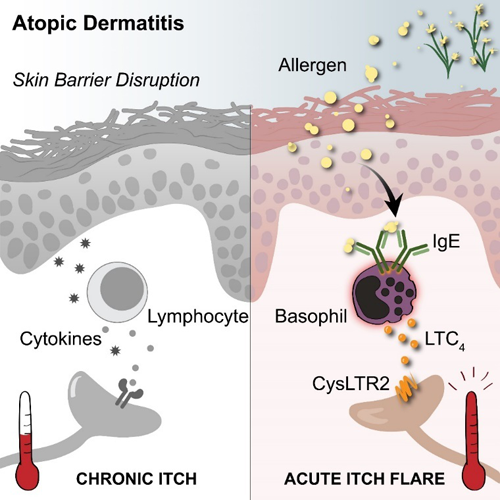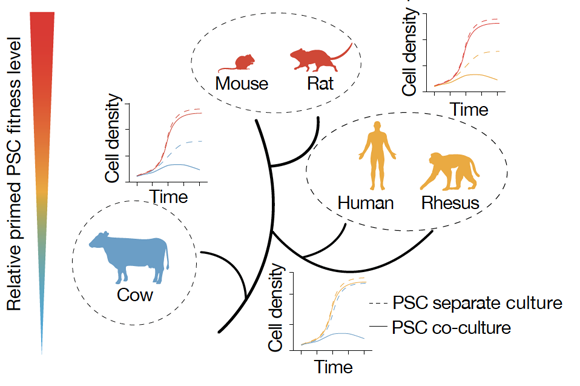Source: The First Affiliated Hospital
Written by: Tang Yiyu
Edited by: Wang Dongmei
FAH-SYSU, Oxford, CUHK Webinar on Precision Medicine Held in the Hospital
On January 22, 2021, The First Affiliated Hospital, Sun Yat-sen University, the University of Oxford and the Chinese University of Hong Kong co-hosted a virtual round-table discussion on research collaboration.
More than 50 experts attended the meeting, including Prof. Xiao Haipeng, Executive Vice President of Sun Yat-sen University and President of FAH-SYSU; Prof. Joseph Sung, Mok Hing Yiu Professor of Medicine, Chinese University of Hong Kong; Prof. Simon Leedham, Director of Center for Personalized Medicine, University of Oxford; Dr. Rajarshi Banerjee, CEO of Perspectum.
The progress of cooperation in the fields of colorectal cancer, diabetes and multiple organ imaging, hepatocellular carcinoma and immunotherapy, inflammatory bowel disease and risk prediction were reported respectively.
During the executive session, Prof. Xiao introduced the new hospital in Nansha, Greater Bay Area. All sides conducted in depth discussion on the future collaboration between The First Affiliated Hospital, Sun Yat-sen University and the University of Oxford, the Chinese University of Hong Kong, and Nanyang Technological University.
This is the second webinar co-hosted by the three institutions, aiming at deepening and broadening international cooperation on Precision Medicine within the Great Bay Area.
FAH-SYSU & SCU Collaborative Seminar on Nursing Held
On January 19, 2021, The First Affiliated Hospital, Sun Yat-sen University and Seirei Christopher University (SCU) co-organized the second collaborative seminar on nursing. Prof. Cheng Shouzhen, Director of Nursing, Prof. Chen Lifen, Deputy Director of Nursing, and head nurses from different specialties attended the virtual meeting.
Prof. Kazuko Ichie from SCU School of Nursing delivered a keynote speech on “Nursing Education in Japan”. Mr. Liu Qiangqiang, nurse from Department of Emergency, FAH-SYSU, introduced teaching and training for clinical nurse specialist in the Hospital.
The participants discussed the difference of nurse education in China and Japan, including curriculum design, continuing education system and qualification authentication standards. Prof. Cheng Shouzhen summarized the lectures and extended appreciation for SCU.
Being a member of the alliance of outstanding teaching hospitals for nurses in China, FAH-SYSU is committed to train a crew of professional nurses through global health programs.
The seminar established an online platform for resource sharing and promoted the academic cooperation between FAH-SYSU and SCU.
Acute itch bursts associated with atopic dermatitis linked to allergens
A novel role for basophils in promoting itch
The longstanding enigma of itch exacerbations in atopic dermatitis (AD) was recently unveiled to be linked with environmental allergens. The new findings, published on January 21 in the journal
Cell, point to a possible new target and strategy to help patients with AD cope with those episodes of acute and severe itch.
Itch (i.e., pruritus) is defined as an uncomfortable sensation on the skin that causes a desire to scratch. Although acute itch is protective by inciting scratching behavior to rapidly expel pathogens and noxious stimuli, chronic itch (defined as itch lasting longer than 6 weeks in clinical practice) is usually pathologic in nature, underlying a variety of medical conditions that range from inflammatory skin disorders to chronic kidney disease and cancer. Notably, patients with chronic itch often experience acute itch flares (i.e. rapid and intense exacerbations of itch).
AD is a pruritic inflammatory skin disease with a chronic but relapsing course, which is characterized by scaly, leaky, and oozing skin. Patients with AD become epicutaneously sensitized to environmental allergens and thus harbor allergen-specific IgE. In addition to chronic itch, patients with AD patients often experience intense bursts of acute exacerbations. However, the mechanisms underlying this remain unclear.

The work published by Dr. WANG Fang et al. identified that patients with AD who harbor allergen-specific IgE exhibit a propensity for acute itch flares from analyses of high resolution clinical trial data. Using animal models, Dr. Wang further demonstrated that acute itch exacerbations induced by allergens were mediated by an innate immune cell population that is called basophils and their related leukotriene C4, a typical inflammatory factor. Although rare in circulation, basophils exhibited direct interactions with sensory neurons in the skin and the specific activation of basophils is sufficient to provoke scratching behaviors in research animals. These findings reveal a previously unrecognized role of basophils in promoting itch and clearly outline new therapeutic targets to advance novel treatments for itch in patients.
Dr. WANG Fang is an Associate Professor in Department of Dermatology at The First Affiliated Hospital, Sun Yat-sen University. In 2017, she joined the laboratory of Dr. Brian Kim in the Center for the Study of Itch and Sensory Disorders of Washington University School of Medicine and started investigating itch mechanisms underlying skin disorders. As a physician scientist, she is committed to performing clinically relevant, fundamental biomedical research with the aim of improving patient care and advancing scientific knowledge. Her achievements not only build a consolidated foundation for translational research on disease prevention and treatment, but also open new avenues for the hospital’s further collaboration with foreign research institutions.
A new paradigm of stem cell competition between interspecies was discovered
A team led by The First Affiliated Hospital, Sun Yat-sen University, UT Southwestern Medical Center and BGI-Shenzhen have identified a new paradigm of stem cell competition between interspecies. This finding, reported online in
Nature on January 28, 2021, paves the way for studying evolutionarily conserved mechanisms underlying competitive cell interaction during early mammalian development.
Scientists have long known that Pluripotent stem cells (PSCs) provide an invaluable in vitro model to study early mammalian development, and hold great potential in revolutionizing regenerative medicine. More recently, PSC-derived interspecies chimeras have provided a means to generate complex three-dimensional tissues
in vivo, which may help overcome the world-wide shortage of donor organs for transplantation. Although interspecies chimeras with extensive donor cell contribution have been achieved among several rodent species, low levels of chimeric contribution from donor PSCs were detected in evolutionarily distant host species, even at early developmental stages. During mammalian embryonic development, a wide range of cellular changes take place, including a dramatic increase in proliferation rate and a rewiring of the transcriptional, epigenetic, metabolic and signaling networks. The precisely orchestrated timing and complexity of these changes provide significant potential for the emergence of aberrant cells, which are subsequently eliminated to ensure unperturbed development. During interspecies chimera formation, xenogenic PSCs may be treated as unfit or aberrant cells and targeted for elimination. To date, however, cell competition has not been examined in an interspecies context during early development due to lack of an
in vitro model.
In this latest research, Dr. ZHENG Canbin in Jun Wu’s lab and his colleagues developed an interspecies PSC co-culture strategy and uncover a previously unknown mode of cell competition between species. They labeled FR-cultured human H9 embryonic stem cells (ESCs) and mouse epiblast stem cells (mEpiSCs) with Enhanced Green Fluorescent Protein (EGFP) and monomeric Kusabira Orange (mKO), respectively. Time-lapse confocal microscopy was performed on co-cultured H9 ESCs and mEpiSCs. Interestingly, they observed that, after coming into contact with mEpiSCs, many H9 ESCs underwent apoptotic cell death. This is the first time to demonstrate competitive interaction between co-cultured human and mouse primed PSCs, and “winner” mEpiSCs induced the elimination of “loser” human PSCs. Later they found this kind of interspecies PSC competition occurs during primed but not na?vepluripotency. They also extended primed PSC competition beyond human and mouse and suggest it is a more general phenomenon between evolutionarily distant species (Fig. 1).

Fig 1. Schematic summary showing the hierarchy of “winner” and “loser” species during interspecies primed PSC competition
Through comparative transcriptome analysis, they found genes related to the NF-κB signaling pathway, among others, were upregulated in loser cells. Genetic inactivation of a core component (
P65) and an upstream regulator (
MYD88) of NF-κB complex in human cells could overcome interspecies PSC competition. Suppressing interspecies PSC competition significantly improved the survival of human cells in early mouse embryos. Recently, apoptosis was recognized as an initial barrier of interspecies chimerism, and forced expression of anti-apoptotic factors including
BCL-2 and
BMI1 improved primed human PSC chimerism in early mouse and pig embryos. This study provided mechanistic insights linking human cell death to interspecies cell competition during primed pluripotency. They establish a novel platform to study evolutionarily conserved cell competition mechanisms during early mammalian development, and when combined with other strategies, e.g. blastocyst complementation and novel PSC and embryo cultures, may overcome the xenogeneic barrier and lead to successful interspecies organogenesis in an evolutionarily distant host.
The first author, Dr. ZHENG Canbin says, “This is a beautiful study that overcome the xenogeneic barrier and lead to successful interspecies chimeras generated between different species will help gain knowledge of evolutionarily conserved and divergent developmental mechanisms, provide novel insights into size and timing control and other species-specific traits, and most recently generate hope for solving the world-wide shortage of donor organs via interspecies organogenesis.”
Dr. ZHENG Canbin is from Department of Microsurgery, Orthopedics, Trauma and Hand Surgery, The First Affiliated Hospital, Sun Yat-sen University. He has worked in Jun Wu’ lab as visiting scholar in Department of Molecular Biology, University of Texas Southwestern Medical Center since 2018. Jun Wu is the correspondent author in this study. Other researchers who have contributed to this study include Yingying Hu, Masahiro Sakurai, Carlos A. Pinzon-Arteaga, Leqian Yu, Jie Li, Yulei Wei, Daiji Okamura, Benjamin Ravaux, Haley Rose Barlow, Elizabeth H. Chen, Ondine Cleaver, Hai-Xi Sun, Ying Gu.
Link to the paper:
https://www.nature.com/articles/s41586-021-03273-0



